Never Again -
Anti-fascism in Art
Scroll this way for the exhibit
--->
Scroll for more
--->
Scroll for more
--->
This exhibit explores the theme of anti-fascism in art and how its representation and engagement with its audience has changed (or not changed) throughout history. The works exhibited span a broad selection - from artists who made art critical of the fascist regime they lived in during the third reich to contemporary anti-fascist collectives that engage with the threat of rising right wing populism.
Please note I am in no way a professional so take everything I say with a grain of salt and feel free to use the linked sources to learn more about the topics discussed in this exhibit
curated by Ailie Gieseler
Georg Grosz
Georg Grosz was a german artist well known for his caricatures and paintings of Berlin life in the1920’s. Throughout his works you can see biting critiques of the radical right, which made him a lot of enemies among them and eventually led to him and his family having to flee to New York a few days before Hitler came to power (1933). He continued his works there
Pillars of society is one of his most iconic works (also the one that is given to you in german high school history classes to analyze). Essentially it portrays the German elite class who supported Fascism. It features an aristocrat with a war horse rising from his head, a journalist with a chamber pot on his head, and a Social Democrat (probably a caricature of Friedrich Ebert, leader of the Social Democrats party at the time with his head open to expose a steaming pile of dung. Behind them is a pro-nazi clergyman, ignoring the actions of the Freikorps (a nazi paramilitary organisation)
These two works by contemporary polish artist Wilhelm Sasnal bear the same slogan - “Never again”. The newer of the two (Never Again War, 2018) was part of the Never Again. Art against War and Fascism in the 20th and 21st Centuries. Exhibit in the Museum of Modern Art in Warsaw (click below for an article on the Exhibit).
It explores the more complicated relationship that exists with antifashist slogans and imagery in modern Poland, as both the imagery and ideology were used by the communist Polish People’s Republic (as well as a lot of Ostbloc countries like the DDR) to politically legitimise their own authority. It features the monumental inscription ‘Never again’, which, in 1966, was erected at Westerplatte.
Scroll for more
--->
While Sasnal’s work is more of a representation of a traditional artist working with antifascist themes, the Peng! Collective’s exhibit (which doubled as a political action) is an example of antifascist activists making art which not only thematicises the fight against right wing populism and fascism but actively contributes to it.
After they were invited to make an artistic contribution for the Chemnitz Art Festival “Gegenwarten” with a project budget of 24 000€ they decided to buy objects of antifascist work from antifa groups for 1.000 euros each and exhibit them in a museum as part of an art exhibit. Through this they essentially managed to make a long term conspiracy theory of the far right come true: the state funding “the Antifa”.
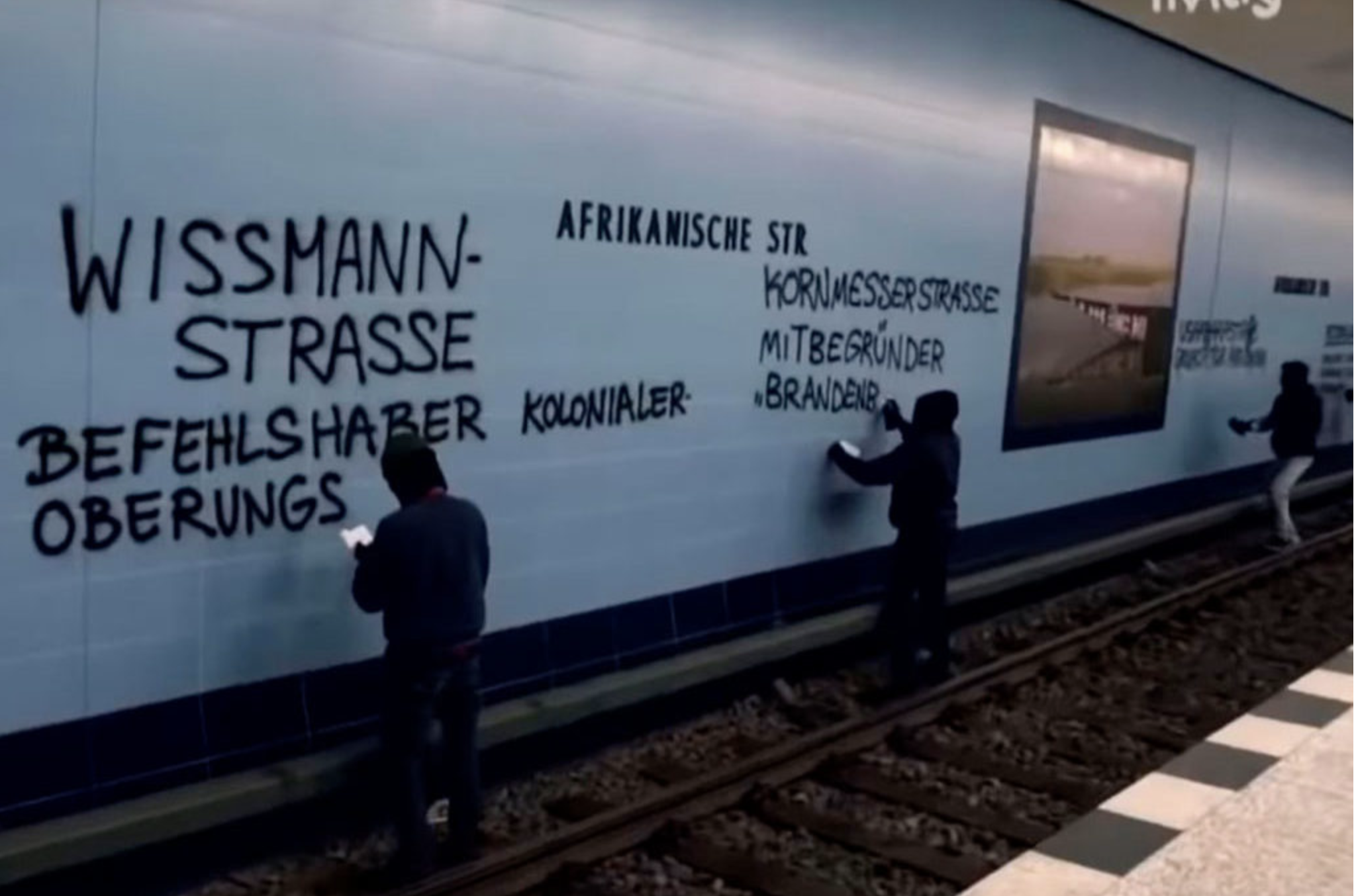
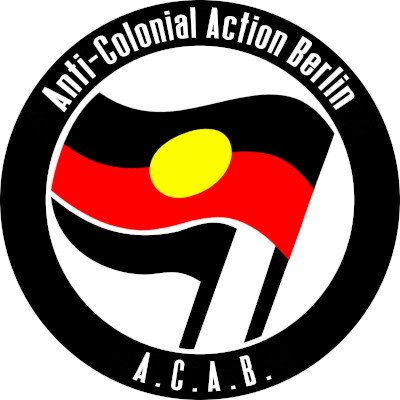
However, while this is the end of the exhibit for now, however I want this to exist as something fluid, as there is so much more to talk about so if you have any additions (like more sources that people can use to educate themselves), or corrections to make please contact me
:)
THE END I SUPPOSE
PILLARS OF SOCIETY (1926)
Georg Grosz
Scroll for more
--->
Displayed here are two works by John Heartfield (June 1891 – April 1968), accompanied by an example of a cover of the publication Radikal which originated from Germany’s autonomous antifascist movement in the mid 70’s as well as two current sticker designs which also utilise the slogan “Never again” (it pops up a lot in anti-fascist art - people really need to get a bit more creative)
Heartfield was a German artist who is most well known for his collages and montages against capitalism, war and fascist dictatorships. He founded ‘die Pleite’ with Georg Grosz and later worked for the Die Rote Fahne and the weekly AIZ (Workers-Illustrated Newspaper)
When the SS were sent after him after the Nazi party gained power he escaped by jumping off his balcony and hiding in a trash can and escaped first to Czechoslovakia and later to England. He eventually rose to number five on the Gestapo’s most wanted list.
Both the aesthetic and the political satire of his photomontages and especially the covers he designed for the communist magazine AIZ helped shape antifascist aesthetics - and continue to serve as a source of inspiration for any artist making critical and political work.
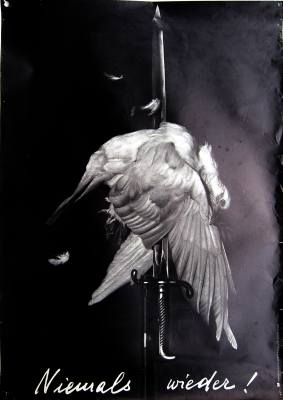
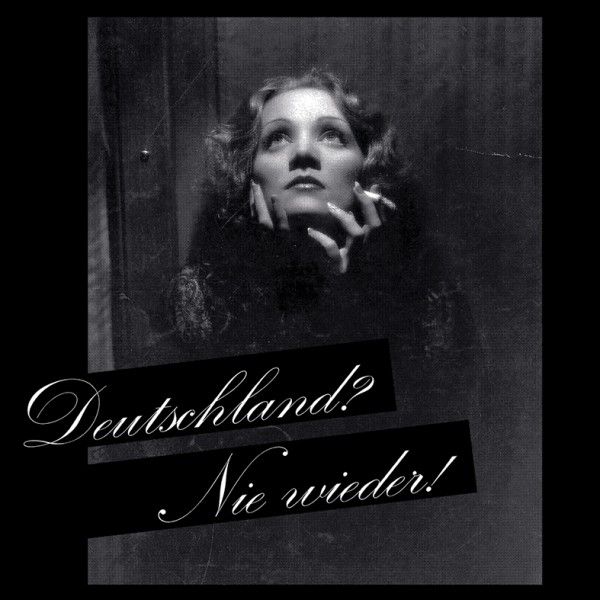
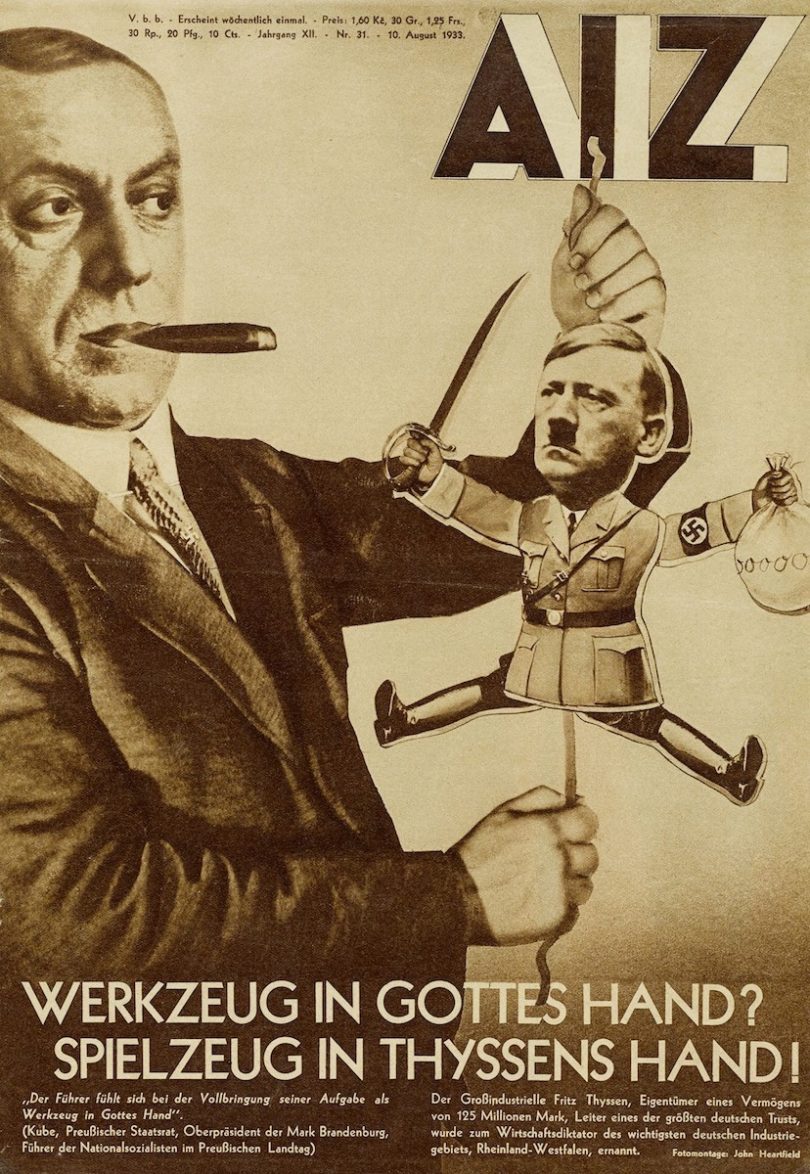
"Die Pleite" Magazine Cover (o8.Nov. 1923)
Georg Grosz
SHUT UP AND DO YOUR DUTY (1927)
Georg Grosz
Germany? Never Again (2020)
Anti-fascist sticker design
NEVER AGAIN (1930 - 1932)
John Heartfield
TOOL IN GOD'HAND? TOY IN THYSSENS' HAND!
Title page of the Workers-Illustrated Newspaper (1933)
John Heartfield
NEVER AGAIN (2010)
Wilhelm Sasnal
NEVER AGAIN WAR (2018)
Wilhelm Sasnal
https://przekroj.pl/en/culture/war-never-again-stach-szablowski
ANTIFA - MYTH AND TRUTH exhibit (Summer 2020)
Peng!Kollektiv
10.000€ FOR THE ANTIFA
(Summer 2020)
Peng! Kollektiv
Short clip about the Exhibit
(it has english subtitles)
UNTITLED (2020ish)
Anti Colonial Action Berlin
Documentary by Arte TRACKS which features the action (Minutes 9:30- 15:05)
The next “Piece” takes even more direct action - to the point where the question may be posed if it really is ‘art’ or potentially confined to the category ‘street art’. - Or if it is just simple political vandalism.
In the Berlin U-Bahn station Afrikanische Straße (African street) the group Anti Colonial Action Berlin reminds of Germany’s colonial history by … Along with raising these issues for debate, it also calls out ways in which the cityscape is still formed by colonial history as shown in racist or reductive street names, or memorials for colonialists.
Check out the Peng! Collective they do super cool stuff :)
Radikal Issue 61
MORE CONTEMPORARY EXAMPLES
AGAINST RACISM AND POLICE BRUTALITY (2020ish)
Graffiti found in Berlin Schoeneberg
ANTIFA AREA (Date unknown)
Graffiti found in Berlin-Schoeneberg
:)